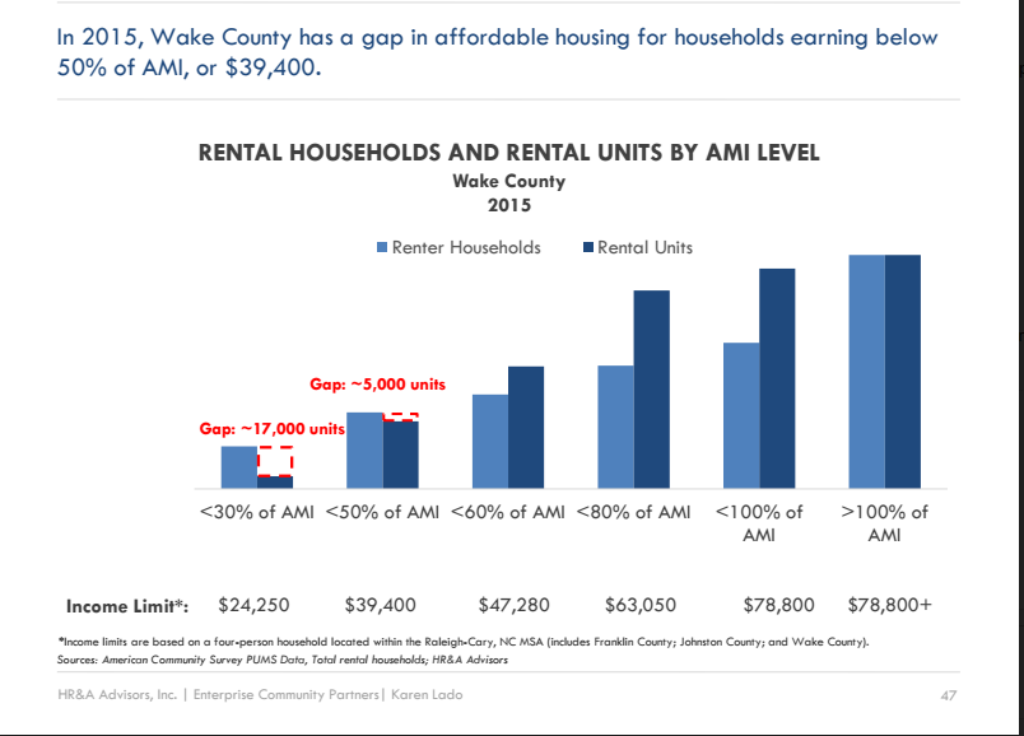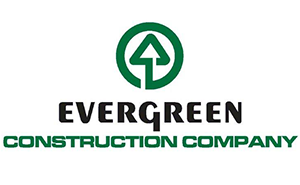
I have the honor of serving on the Wake County Affordable Housing Steering Committee. The Committee is charged with crafting a plan that will prioritize the efforts of Wake County staff to meet the affordable housing need in the years to come. As the Committee moves forward, and more stories of NIMBY responses to development proposals are published, a question that remains in the back of my mind is what are we doing about rental housing for the lowest of incomes? The two primary barriers to reaching this segment of the population are lack of priority in the planning or budgeting process and the influence of NIMBY backlash on political will.
Many local governments prioritize “workforce housing”, which typically refers to 60% AMI and above. However, the consultants facilitating the committee meetings report that the rental deficit in Wake County is found mostly in units at 50% AMI and below. (See figure below.)

This shortage indicates a housing market that is sufficiently producing, and sometimes even over producing, units for those with the highest incomes and forcing individuals on the lower end of the 60%-80% AMI spectrum to occupy units necessary for much lower income families. Unfortunately, families at 50% AMI and below who are not able to obtain higher cost housing are left out. For this reason, local governments must elevate the amount of consideration and investment given to this population to house their most vulnerable constituents.
Local governments must elevate the amount of consideration and investment given to their most vulnerable constituents
In addition to the lack of financial priority, many elected officials receive significant community opposition when it comes time to place affordable housing. Passionate, community opposition to specific developments can turn a general commitment to affordable housing into a political liability for a politician. Habitat Wake’s proposal to the Town of Cary is an perfect example of this. If public opinion on a workforce level project can generate this much political reservation, how will affordable housing ever be developed for the part of the population that is barely able to meet their basic human needs? According to a recent report from the National Multifamily Housing Council, the United States will see a demand for 4.6 million more apartments by 2030 with 220,000 coming from North Carolina. This means without careful investment, places such as Wake County could easily double their deficit for 50% AMI and below due to market demand. As population increase continues and the need for affordable housing grows, elected officials need to take a leadership role in assuaging the anxiety of their constituents.
Without significant financial support and political will, many families below 50% AMI will never be able to improve their current situation and will continue to cycle through the poverty continuum. Rather than shying away from meeting a significant need due to its level of complexity, we must innovate to produce cities that truly allow everyone the option of living where they work. Join the NC Housing Coalition as we continue to fight for the population that is often overlooked as housing priorities are developed.








